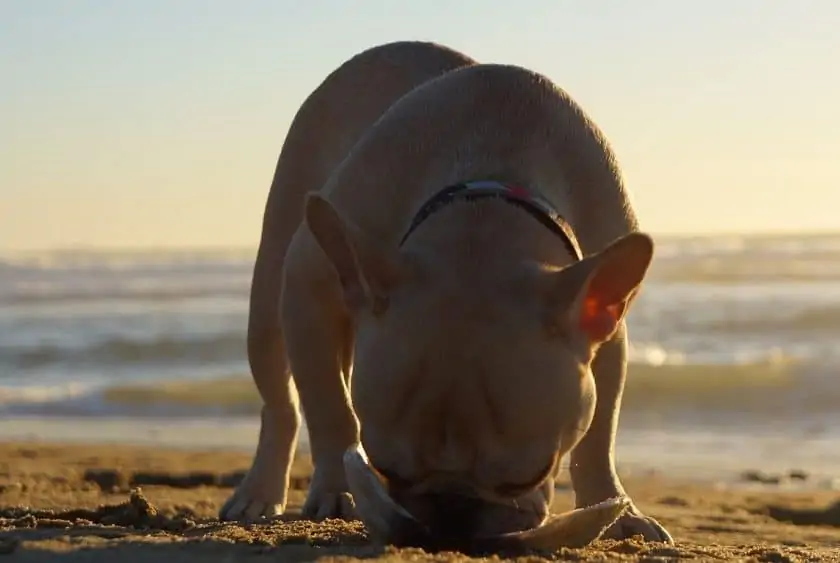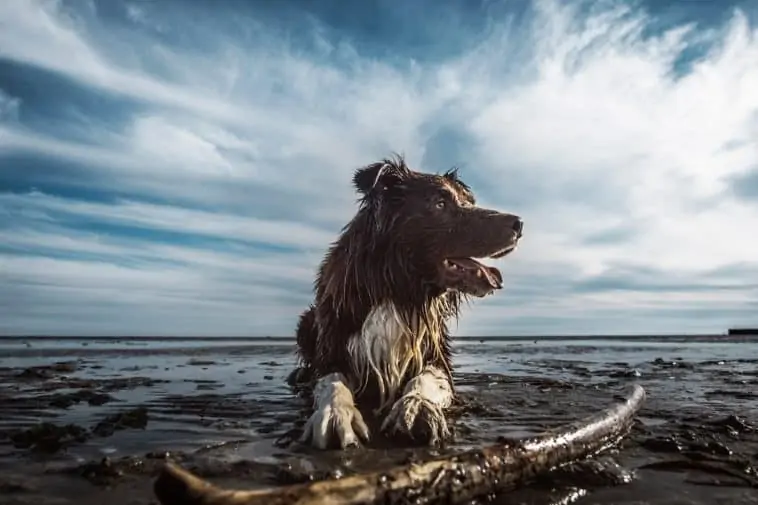If you have ever taken your dog to the beach, you’ll know that they will put their nose in pretty much any nook or cranny. It is not uncommon to see your dog come bounding back to you with half an eaten crab hanging out of its mouth.
You might also be at a restaurant and would not think twice about handing your dog a little bit of your shellfish to eat.
However, you might also be thinking twice before giving it to them because… what if this shellfish isn’t that safe? How can you guarantee that your dog won’t have an allergic reaction?
Well, if you are concerned that you’ve just given your dog a slice of something lethal, then you don’t need to worry.
The short answer is that shellfish like this is very good for your dog. Not only is it packed full of omega-3 oils that are good for your dog’s brain and joints, but it is also a great source of animal protein.
So what happens if your dog eats a large dollop of clams? Can you feed the dog as much as you like or is there a limit? How best to go about introducing this fish into your dog’s diet as part of its regular meal? What if your dog has a very sensitive stomach?
Are there types of shellfish that you should steer clear of?
Well, you can have the answer to all these doggy questions and then some. All you need to do is keep reading this article and you’ll have everything that you need to know about canines and crustaceans.
Table of Contents
The Big Question: Can A Dog Eat Clams?
The answer is, certainly yes! This fish or bivalve is a great thing to introduce into your dog’s diet. Not only is it rich in antioxidants and will stop your dog from catching all sorts of diseases, but it also has plenty of omega-3.
Omega-3 is great for both human and dog brains and joints, providing the hosts with plenty of lubrication. You’ll be able to see your dog getting smarter and more focused if you keep feeding it this food.
Clams are also very rich in healthy salts, another great thing for your dog’s diet.
However, you’ll need to make sure that the clams are cooked properly before feeding them to your dog. In much the same way as humans, you’ll need to make sure that this shellfish is free of all sorts of bacteria.
How Compatible Are Shellfish And Canines?

Shellfish and canines really go well together. As we mentioned earlier, your dog will simply love to root them out while they’re at the beach. However, clams come in sharp shells that can crack and break off in your dog’s mouth or, even worse, in their stomach.
If you see your dog crunching into some shellfish, then we would recommend that you remove the shell from its mouth as quickly as you can to avoid it tearing at the soft insides of your pooch.
If the shell goes down undigested, then you won’t have to worry about it once it is in the belly, as the dog’s stomach acid will take care of it.
How Rapidly Should You Change Your Dog’s Diet?
As with all animals, you should make sure that your dog does not have too much of a radical alteration in its diet. Dogs tend to have sensitive stomachs, so you’ll need to make sure that the change is gradual so as not to make your dog too sick.
Even after you have introduced clams to your dog’s diet, you can expect it to experience a little bit of vomiting and diarrhea.
This is just natural, especially if you are feeding your dogs clams regularly. Your dog might have watery stools, although this will simply be a result of the increased water content.
Should You Feed A Seasoned Clam To Your Dog?
You can, although this might cause your dog further upset to its stomach. Seasoning will often increase the heart rate and might elevate the anxiety of your dog. A lot of the time the dog won’t need seasoning, so we would recommend that you avoid it altogether.
As long as the food is well cooked, then your dog should take to it no problem at all. However, like humans, all dogs have different tastes.
So if your dog does not take to the food immediately, then perhaps this is just an indication that your animal does not like this kind of food.
If the dog food is left in the bowl, then we would certainly suggest that you don’t force the dog to eat it.
This might be a reason that you might want to try seasoning. However, we would recommend mixing your clams with other foods to disguise the new flavor from your dog’s nostrils.
If you put in an excessive amount of seasoning, such as oregano, then you might be expected to see some stomach inflammation, which might result in loose stools and stomach cramps in your dog.
What Other Foods Are Harmful To Your Dog?
There are a wide variety of foods that contain toxins that are harmful to dogs, the most obvious and well-known one being dark chocolate. Not only is this substance very harmful, but it is potentially lethal to these animals.
You should also avoid any wheat or mustard seeds, as these can be very harmful to your dog too. They will also really dislike onions and garlic, as these are not only toxic, but they really won’t taste very nice to your pet.
You should also try to avoid grapes, as there are ingredients in the juice that can upset your dog’s stomach.

